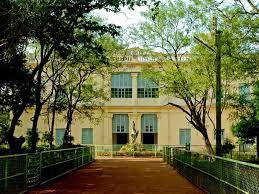Santiniketan, renowned as the abode of Nobel laureate Rabindranath Tagore and the establishment of Visva-Bharati University over a century ago, has achieved the prestigious recognition of being included in the UNESCO World Heritage List. This announcement is a momentous occasion for India and its rich cultural heritage.

UNESCO took to social media to share this momentous news, stating, “New inscription on the @UNESCO #WorldHeritage List: Santiniketan, #India. Congratulations!”
India has long sought UNESCO recognition for this cultural gem situated in the Birbhum district of West Bengal. The decision to include Santiniketan in the UNESCO World Heritage List was made during the 45th session of the World Heritage Committee, currently taking place in Saudi Arabia.
Santiniketan, founded in 1901 by poet and philosopher Rabindranath Tagore, affectionately known as Gurudev, initially served as a residential school and a center for art rooted in ancient Indian traditions. It embodied a vision of human unity that transcended religious and cultural boundaries.
In 1921, it evolved into a ‘world university’ known as Visva Bharati, symbolizing the unity of humanity. Santiniketan stands in contrast to the prevailing architectural styles of British colonialism and European modernism of the early 20th century. Instead, it represents a vision of pan-Asian modernity, incorporating elements from ancient, medieval, and folk traditions spanning the entire Asian region.
The inclusion of Santiniketan in UNESCO’s World Heritage Sites list has been met with pride and joy by Indian leaders. Prime Minister Modi hailed it as a proud moment for all Indians, while West Bengal Chief Minister Mamata Banerjee expressed her delight and pride that Santiniketan, the town associated with Gurudev Rabindranath Tagore, has earned its rightful place on UNESCO’s World Heritage List. She emphasized that Santiniketan, a source of pride for Biswa Bangla, was nurtured by the poet and has been cherished by generations of Bengalis.